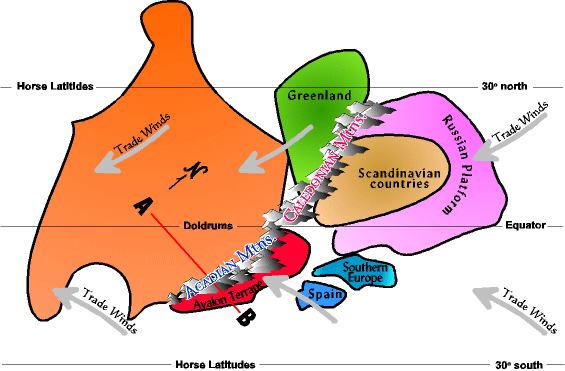|
The Old Red Sandstone Continent (Larussia)
In the Mid and Late Devonian During the mid to late Devonian, North America, a part of the Old Red Sandstone (Larussia) supercontinent, lay on the equator with the area east of the present Mississippi river mostly in the southern hemisphere. Most of North America lay under the Kaskaskia epicontinental sea, and on both the west and east coasts were mountain ranges. The Antler mountains were in western Nevada (not shown on the map), and the Acadian mountains in the east.  Shortly after the Caledonian orogeny the Avalon terrane (Armorica in its full form; Avalon after the Triassic rifting; always referred to as Avalon in these pages) collided with the east coast to create the Acadian mountains. Avalon slid in obliquely in its collision and hit at three main locations, maratime provinces of Canada, southern New York and Pennsylvania (Catskill foreland basin), and southern Virginia (Pocono foreland basin). The outlines of the continents are diagramatic and meant only to suggest their positions and shapes. Continental shapes were quite different in the past, not to mention the fact that the outline and position of the shorelines, what we usually see on a map, would have varied markedly with sea level and tectonic changes. |